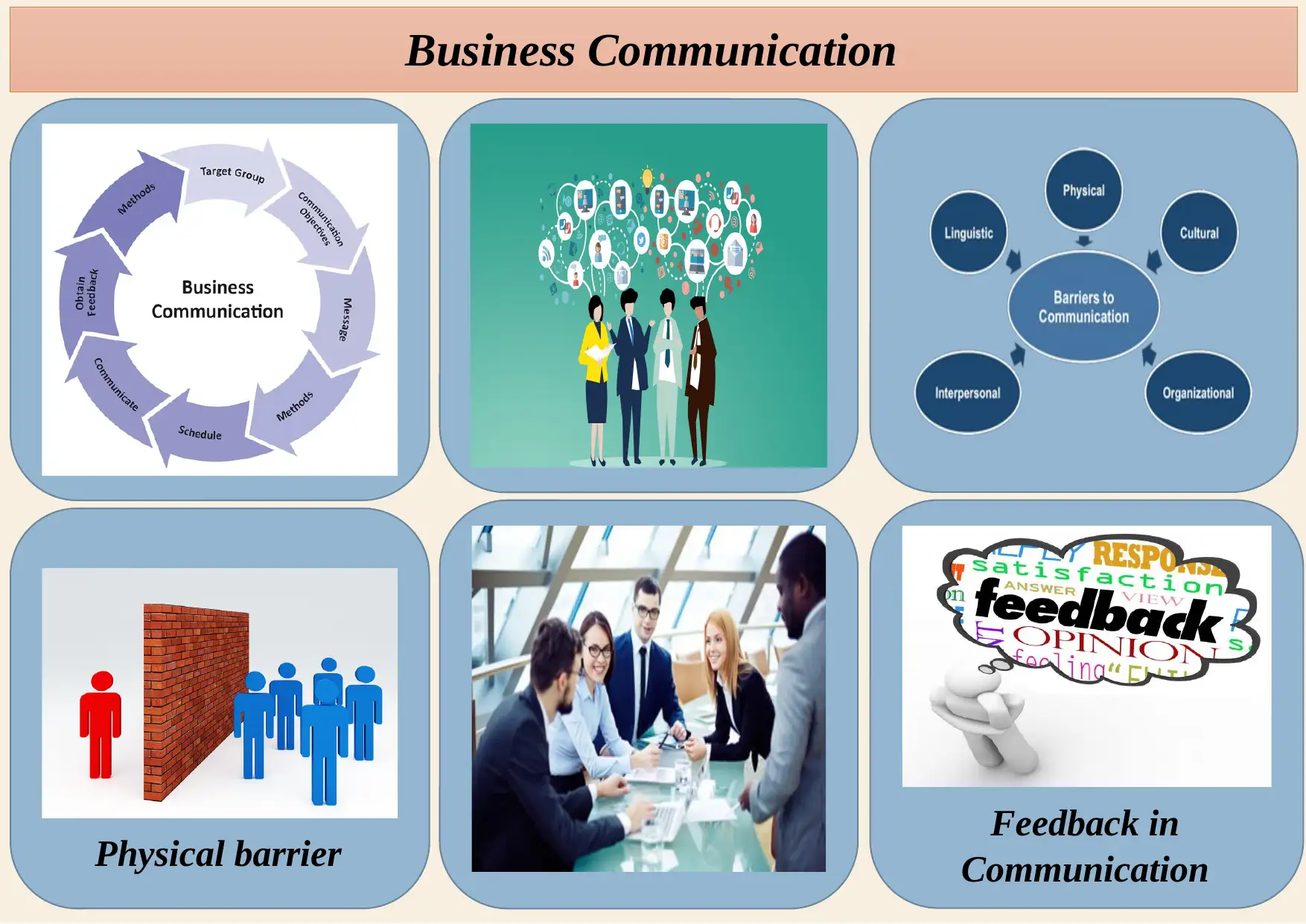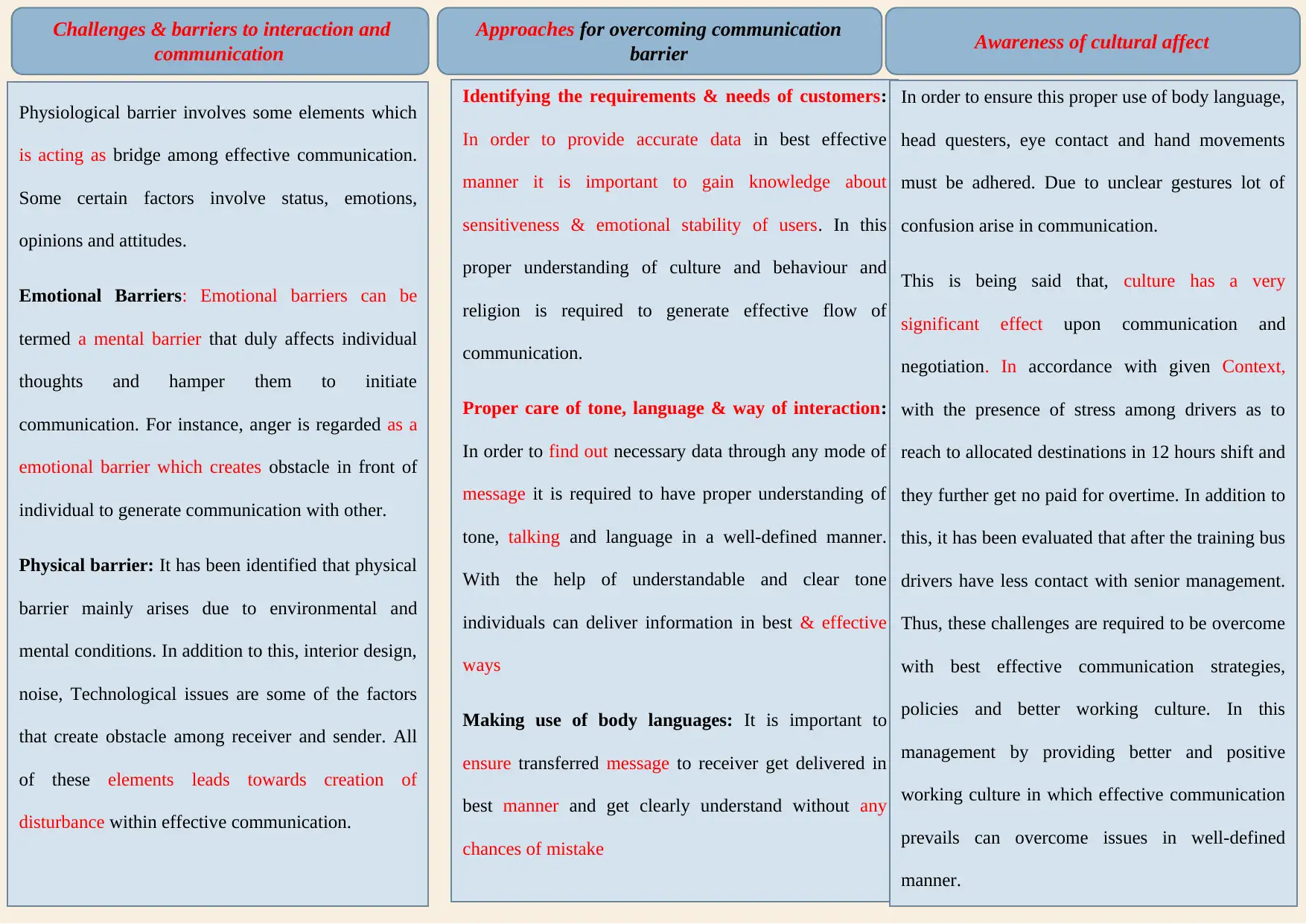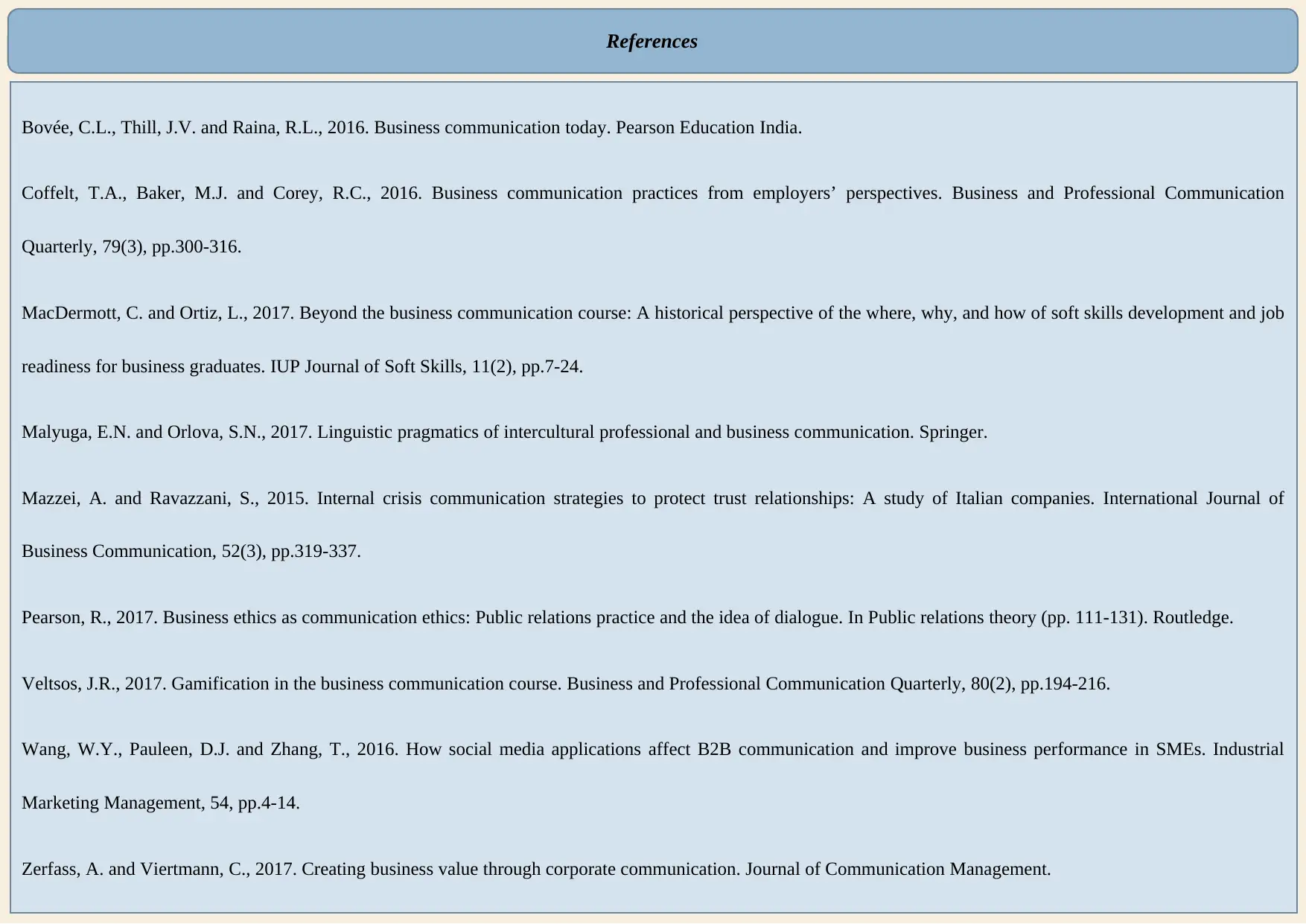Analyzing Business Communication Barriers and Solutions
VerifiedAdded on 2023/01/16
|3
|723
|75
Report
AI Summary
This report provides a comprehensive overview of the challenges and barriers encountered in business communication. It identifies various obstacles, including physical barriers (environmental and technological), emotional barriers (stress, anger, and cultural differences), and physiological barriers. The report emphasizes the importance of understanding the context and audience, as well as using appropriate body language, tone, and language. It highlights the need for clear and effective communication strategies, such as identifying customer needs, considering emotional stability, and promoting a positive working culture. The report also references academic sources to support its analysis and provide further insights into overcoming these communication barriers. The solution is available on Desklib for students.
1 out of 3










![[object Object]](/_next/static/media/star-bottom.7253800d.svg)